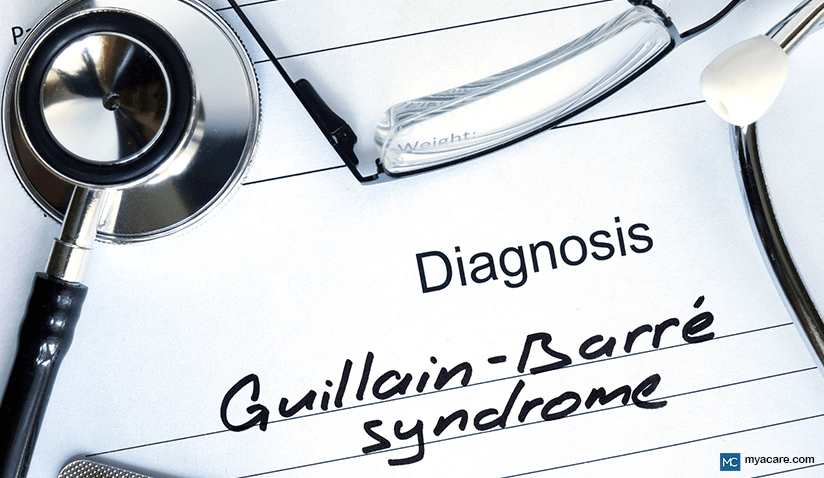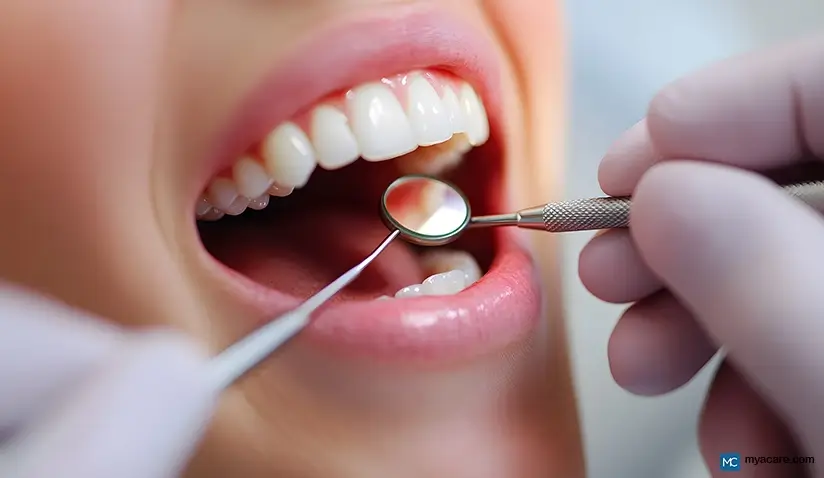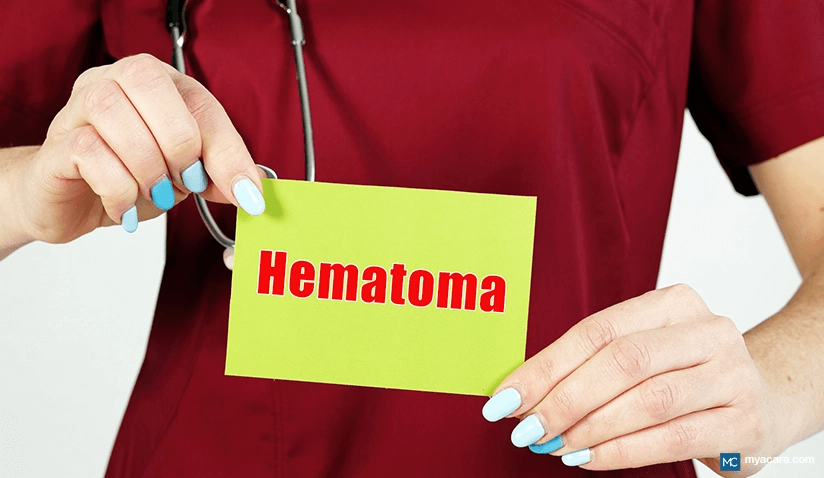Guillain-Barré Syndrome (GBS): Causes, Symptoms, Treatment and Latest Research

Medically Reviewed by Dr. Sony Sherpa, (MBBS)
Guillain-Barré Syndrome (GBS) is a rare autoimmune disorder that primarily affects the peripheral nervous system. In this condition, the body's immune system mistakenly targets nerves outside the brain and spinal cord. GBS typically starts with symptoms such as weakness, tingling in the limbs (paresthesia), and numbness, which can progress to severe paralysis.
While the condition can be life-threatening, with proper treatment, many people eventually recover. The recent surge in GBS cases in India has drawn attention, with reports of increasing incidences, including five suspected deaths related to the syndrome early this year.
GBS most commonly affects adults aged 30-50 years, with a higher incidence in males. It is rarely seen in children, but when it does occur in this age group, they generally recover fully. The condition's prevalence is low, but its impact can be severe if not treated promptly.
Although GBS is rare, it can be fatal if left untreated, particularly in severe cases where respiratory failure occurs. However, with medical interventions, such as plasma exchange and immunoglobulin therapy, the survival rate is high, and many patients recover completely or with minimal long-term disability.
Three Phases of GBS
- Progressive Phase: This is the initial phase, where symptoms begin and worsen, potentially leading to paralysis. It typically lasts from a few days to a few weeks.
- Plateau Phase: During this phase, the progression of symptoms levels off, and patients are stable. This phase can last from weeks to months, depending on severity.
- Recovery Phase: This phase involves gradual improvement of nerve function and a reduction in symptoms. Recovery varies from person to person, with some patients regaining full function, while others may experience lingering effects like weakness or fatigue.
GB Syndrome Symptoms
Progressive Weakness
One of the hallmark symptoms of Guillain-Barré Syndrome (GBS) is progressive weakness, which typically starts in the legs and gradually ascends upwards. Patients may initially experience difficulty walking or a sense of unsteadiness, often struggling with tasks such as climbing stairs.
This ascending paralysis can progress rapidly, affecting the muscles in the trunk and arms. In some cases, GBS may begin in the arms or even the face. Along with weakness, people may experience sensations of numbness, tingling, or a prickling feeling (paresthesia) in their limbs. By the third week, the condition tends to reach its most severe point, and the individual may experience significant weakness.
Other Potential Symptoms
- Difficulty Breathing: As the paralysis spreads, the muscles involved in breathing may be affected, potentially leading to respiratory failure.
- Trouble with Facial Movements: The weakening of facial muscles may make it difficult to speak, chew, or swallow, often resulting in slurred speech or an inability to swallow food and liquids.
- Changes in Heart Rate and Blood Pressure: GBS can affect the autonomic nervous system, causing irregular heart rate and blood pressure.
- Bowel and Bladder Dysfunction: Some people may experience difficulty controlling bowel or bladder function, resulting in incontinence.
- Pain in Muscles and Joints: Many patients report aching or sharp pain in the muscles or joints, often exacerbated by movement.
- Inability to Move the Eyes/Double Vision: In severe cases, eye movement may become restricted, or patients may experience double vision due to paralysis of the eye muscles.
When to See a Doctor
If any of the above symptoms occur, especially if the weakness is progressing rapidly or respiratory issues arise, immediate medical attention is necessary. Early diagnosis and intervention, such as intravenous immunoglobulin (IVIG) therapy or plasma exchange, can significantly improve outcomes.
GBS Disability Score
Healthcare professionals use the GBS Disability Score to assess the severity of Guillain-Barré Syndrome. It measures the patient's ability to perform basic functions, such as walking or swallowing, and helps determine the level of intervention required. This score helps track the progression of the condition and guides treatment decisions.
Types of Guillain-Barré Syndrome (GBS)
- Acute Inflammatory Demyelinating Polyneuropathy (AIDP)
This type of GBS, the most common in the West, causes weakness and paralysis by attacking the myelin sheath. It primarily affects the peripheral nerves.
- Axonal Forms of GBS include:
- Acute Motor Axonal Neuropathy (AMAN): Involves direct damage to the axons (nerve fibers) rather than the myelin sheath, leading to more severe weakness.
- Acute Motor and Sensory Axonal Neuropathy (AMSAN): While similar to AMAN, this type of GBS also impacts sensory nerves, leading to both motor and sensory impairments.
- Miller Fisher Syndrome (MFS)
A variant of GBS, MFS typically presents with ataxia (lack of coordination), ophthalmoplegia (paralysis of eye muscles), and areflexia (lack of reflexes). This form primarily affects the cranial nerves.
- Sensory Ataxic Variant
This form involves sensory disturbances and ataxia, with minimal motor weakness. It is less common and often presents with symptoms such as balance problems and sensory loss.
Conditions that Mimic Guillain–Barré and Miller Fisher Syndromes
Since some conditions resemble GBS and MFS, it is important to differentiate between them for accurate diagnosis and appropriate treatment. These conditions include:
- Chronic Inflammatory Demyelinating Polyneuropathy (CIDP): CIDP shares some symptoms with GBS, but it progresses more slowly and is a chronic condition.
- Polyneuropathy Associated with Diabetes: Often presents with symmetrical weakness and sensory loss in the limbs.
- Multiple Sclerosis (MS): In rare cases, MS can present with symptoms similar to GBS, such as weakness and sensory loss, but MS affects the central nervous system, not the peripheral nerves.
- HIV-associated Neuropathy: HIV can lead to peripheral neuropathy that mimics GBS.
- Lyme Disease: This condition can cause neuropathy that presents similarly to GBS, particularly in the early stages.
GBS vs CIDP
While both Guillain-Barré Syndrome (GBS) and Chronic Inflammatory Demyelinating Polyneuropathy (CIDP) involve peripheral nerve damage, there are a few key differences:
|
Condition |
GBS |
CIDP |
|
Onset |
Typically has an acute onset (within days to weeks) |
CIDP has a more gradual onset and can take months or years to develop. |
|
Duration |
This is usually a short-term condition, with recovery beginning within weeks to months. |
This is a chronic disorder that may require long-term treatment to manage flare-ups and prevent progression. |
|
Treatment Response |
Typically responds well to acute treatments like intravenous immunoglobulin (IVIG) and plasma exchange. |
Often requires long-term treatment with steroids, IVIG, or other immunosuppressive therapies to manage symptoms and prevent relapse. |
|
Recovery |
Most people recover fully or with minimal long-term effects |
Often results in more permanent nerve damage if not treated properly. |
Causes of Guillain-Barré Syndrome (GBS)
The immune response is triggered by an infection or other factors, but the exact cause remains unclear in many cases.
GBS is not contagious, meaning it cannot be spread from person to person. It is an immune-mediated response rather than a viral or bacterial infection that can be passed along.
Possible Triggers
The following factors are known to trigger or precede the development of GBS:
- Infections:
- Campylobacter jejuni: A bacterial infection often associated with food poisoning.
- Zika virus: A viral infection that has been linked to GBS, especially during outbreaks.
- Cytomegalovirus (CMV): In some cases, this common virus can cause GBS.
- Epstein-Barr virus (EBV): Known to cause mononucleosis and has been associated with GBS.
- COVID-19 virus: Some studies suggest that GBS may develop after a COVID-19 infection.
- Vaccinations (rare):
While very rare, there have been instances where vaccinations triggered GBS. The flu vaccine, in particular, has been associated with a slight increase in GBS risk. - Surgeries:
Surgeries, especially those involving the nervous system or a significant immune response, may also act as a trigger for GBS. However, this is a rare complication.
Timing of Onset
GBS usually develops within days or weeks (typically 1 to 6 weeks) after a respiratory or gastrointestinal bacterial or viral infection. It often follows a period of fever, diarrhea, or respiratory symptoms.
Risk Factors
While GBS can affect anyone, certain risk factors increase the likelihood of developing the syndrome:
- Age: Men older than 50 years are at a higher risk, particularly those with prior infections or other autoimmune conditions.
- Infection History: Those with a history of infections such as Campylobacter jejuni are more likely to develop GBS.
Diagnosis of Guillain-Barré Syndrome (GBS)
Importance of Early Diagnosis and Treatment
Prompt diagnosis and treatment of GBS are essential for preventing serious complications, including respiratory failure and cardiac arrhythmias, and maximizing the chances of a good recovery. Early intervention can significantly minimize long-term effects.
Medical History and Physical Examination
A thorough review of the patient's medical history is essential to identify any recent infections or vaccinations that could trigger GBS. The neurological examination focuses on assessing muscle strength, reflexes, and sensory responses, which helps identify patterns of weakness and paralysis characteristic of GBS.
Imaging
While imaging tests (such as MRI) may be performed to rule out other conditions, they are typically not conclusive in diagnosing GBS. Imaging helps exclude structural causes of neurological symptoms, such as spinal cord lesions.
Breathing Test (Spirometry)
A spirometry test measures lung function and can help detect early signs of respiratory muscle weakness. GBS may affect the diaphragm and other muscles involved in breathing, so this test helps assess the patient's ability to breathe properly and identify the need for respiratory support.
Nerve Conduction Studies and Electromyography (EMG)
These tests are key in diagnosing GBS. Nerve conduction studies measure how well electrical signals travel through nerves, while electromyography (EMG) examines the electrical activity in muscles. These tests help assess nerve function and detect damage or delays in nerve signal transmission, which are common in GBS.
Lumbar Puncture (Spinal Tap)
A lumbar puncture (spinal tap) is performed to analyze cerebrospinal fluid (CSF). In GBS, the CSF may show an elevated protein level with a normal white blood cell count, a characteristic finding known as albuminocytologic dissociation, which supports the diagnosis of GBS.
Complications of Guillain-Barré Syndrome (GBS)
- Residual Neuropathy
GBS damages the peripheral nerves by attacking either the myelin sheath, which protects the nerves, or the axons, which are the nerve fibers themselves. In approximately half of all patients, this damage leads to motor and sensory dysfunction.
- Blood Clots and Pressure Sores
An increased risk of blood clots, especially deep vein thrombosis (DVT) is probable due to prolonged immobility from weakness or paralysis. Patients who are unable to move may also develop pressure sores (bedsores) due to prolonged pressure on certain areas of the body, which can lead to skin breakdown and infection.
- Relapse of Muscle Weakness
In some cases, people who have recovered from GBS may experience a relapse of muscle weakness. This can be a sign of another autoimmune flare or an indication of an incomplete recovery. Ongoing monitoring and physical therapy are important to manage this risk.
- Cardiac Arrhythmias
GBS can affect the autonomic nervous system, impacting involuntary functions such as heart rate and blood pressure which are controlled by the ANS. This disruption can lead to cardiac arrhythmias, or irregular heartbeats, which can be potentially life-threatening if not properly managed.
- Mortality Risk
GBS can be a medical emergency due to the risk of life-threatening complications. While the majority of patients recover, approximately 5% succumb to complications such as respiratory failure, pneumonia, or cardiac arrhythmias. This underscores the high morbidity and significant mortality associated with GBS.
Other complications may include lower respiratory tract infections, hyponatremia, urinary tract infections, dysautonomia, confusion, and cognitive disturbances.
Guillain-Barré Syndrome in Pregnancy
Guillain-Barré Syndrome (GBS) during pregnancy is a rare but serious condition. It can lead to complications for both the mother and the fetus. The pregnancy-related complications of GBS include:
- Preterm Labor: Neurological impairment due to GBS may affect the ability to manage pregnancy complications or result in preterm labor.
- Respiratory Failure: Pregnant women with GBS may experience respiratory failure, which can get more complicated due to the physiological changes in pregnancy, including increased blood volume and respiratory demands.
- Neonatal Risk: The risk to the fetus is generally indirect but can include issues arising from the mother's need for intensive medical care. There is some evidence suggesting that newborns of women with GBS may be more likely to experience growth restriction.
Guillain-Barré Syndrome Treatment
Plasma Exchange (Plasmapheresis)
Plasma exchange is a procedure where the patient’s blood is filtered to remove harmful antibodies that are attacking the nervous system. This procedure helps to reduce the severity of the disease and speeds up recovery in some patients. It is particularly effective when administered in the early stages of GBS.
Intravenous Immunoglobulin (IVIG)
IVIG involves infusing the patient with pooled antibodies from healthy donors. IVIG helps block the immune system’s attack on the nerves by modulating immune function. It is typically used as an alternative to plasma exchange and is given to patients who cannot undergo plasmapheresis.
Supportive Care
Supportive care is essential for managing GBS symptoms, especially in severe cases. Supportive care may include:
- Pain management: Pain due to nerve damage is common and can be managed with medications like analgesics or anticonvulsants.
- Blood clot prevention: Preventing blood clots through movement, compression devices, or blood thinners is important since immobility can increase clot risk.
- IV fluids and tube feeding: If swallowing becomes difficult, IV fluids or feeding tubes may be required to ensure proper nutrition and hydration.
- Respiratory support: In cases where respiratory muscles are weakened, mechanical ventilation may be necessary to help the patient breathe.
Physical Therapy and Rehabilitation
Rehabilitation is essential in the recovery phase of GBS. Physical therapy helps patients regain strength and mobility, while speech therapy addresses any issues with speaking or swallowing. Occupational therapy assists with regaining daily functional skills. The importance of mobility aids such as walkers, canes, or wheelchairs is emphasized to help patients regain independence during recovery.
GBS and Diet: What to Eat and What to Avoid for Optimal Health
A balanced diet is crucial in supporting recovery. It is important to include:
- High-protein foods (lean meats, beans, eggs) to support muscle healing.
- Nutrient-dense foods (vegetables, fruits, whole grains) to support immune function and overall recovery.
- Hydration: Keeping well-hydrated is essential to support bodily functions and prevent complications from dehydration.
Patients should work with a healthcare provider or dietitian to develop a diet plan that meets their specific nutritional needs during recovery.
Recovery from Guillain-Barré Syndrome (GBS)
Recovery from GBS can take weeks, months, or even longer, depending on the severity of the illness and the individual’s response to treatment. The recovery process is gradual and typically begins after the plateau phase of the disease. Most people experience substantial recovery, but the extent and speed vary.
Some people may recover fully, while others may have long-term effects, including mild weakness or sensory issues. The recovery timeline can range from a few months to several years, especially for those with more severe cases of GBS.
Prognosis and Long-Term Outlook
The prognosis for most people with GBS is generally positive, with most achieving significant or full recovery. However, some may experience long-term effects such as persistent weakness, fatigue, or sensory disturbances. In rare cases, GBS may lead to permanent disability. Overall, the long-term outlook is more favorable when the patient receives early and appropriate treatment. Recovery depends on the individual's health, age, and the severity of nerve damage.
Prevention
While there is no guaranteed way to prevent GBS, you can minimize your risk of infection that often triggers it. It is important to:
- Seek treatment for infections promptly, especially gastrointestinal or respiratory infections.
- Getting vaccinated against the flu and other preventable diseases can help reduce the risk of infections that may trigger GBS (though such triggers are rare).
- Follow good hygiene practices to avoid infections that could increase the risk of GBS.
FAQs
- How Does Guillain-Barré Syndrome Differ from Other Conditions?
- Transverse Myelitis (TM): Inflammation of the spinal cord causes a rare neurological disorder called Transverse Myelitis. Like GBS, it can lead to muscle weakness and paralysis, but TM typically affects the spinal cord, while GBS affects the peripheral nervous system. TM often presents with more localized symptoms, such as loss of sensation or paralysis in specific areas, while GBS typically begins with weakness in the limbs and may progress more quickly.
- Multiple Sclerosis (MS): Multiple Sclerosis (MS) is a chronic condition where the body's immune system attacks the central nervous system, leading to weakness, numbness, and problems with coordination. Unlike GBS, which is often triggered by an infection and progresses quickly, MS develops gradually over time and typically involves relapses and remissions. MS is also more likely to affect younger adults, while GBS often occurs in older adults.
- Can Dengue Cause Guillain-Barré Syndrome?
Yes, there have been reports of dengue virus being associated with the onset of GBS. In some cases, people who have had a dengue infection may develop GBS as a complication. While the exact cause is unknown, it is thought that the virus might trigger the body's defenses to mistakenly attack the nerves.
- How Long Does Guillain-Barré Paralysis Last?
The paralysis associated with GBS typically peaks within the first three weeks of the illness, after which the progression slows or plateaus. The duration of paralysis varies, but most people experience improvement within 2 to 6 months. Some patients may continue to experience mild weakness or sensory changes, but full recovery can take up to a year or longer in severe cases.
Latest Updates on Guillain-Barré Syndrome
The latest updates on Guillain-Barré Syndrome (GBS) indicate that researchers continue to explore the condition's causes, treatment options, and long-term outlook. Recent studies emphasize the role of viral and bacterial infections in triggering GBS, and the efficacy of plasma exchange and intravenous immunoglobulin (IVIG) in treatment. Additionally, new research focuses on improving diagnostic methods, and understanding the long-term recovery process for people affected by GBS.
To search for the best Neurology healthcare providers in Azerbaijan, Germany, India, Malaysia, Spain, Thailand, Turkey, UAE, UK and the USA, please use the Mya Care search engine.
To search for the best healthcare providers worldwide, please use the Mya Care search engine
The Mya Care Editorial Team comprises medical doctors and qualified professionals with a background in healthcare, dedicated to delivering trustworthy, evidence-based health content.
Our team draws on authoritative sources, including systematic reviews published in top-tier medical journals, the latest academic and professional books by renowned experts, and official guidelines from authoritative global health organizations. This rigorous process ensures every article reflects current medical standards and is regularly updated to include the latest healthcare insights.

Dr. Sony Sherpa completed her MBBS at Guangzhou Medical University, China. She is a resident doctor, researcher, and medical writer who believes in the importance of accessible, quality healthcare for everyone. Her work in the healthcare field is focused on improving the well-being of individuals and communities, ensuring they receive the necessary care and support for a healthy and fulfilling life.
Featured Blogs



